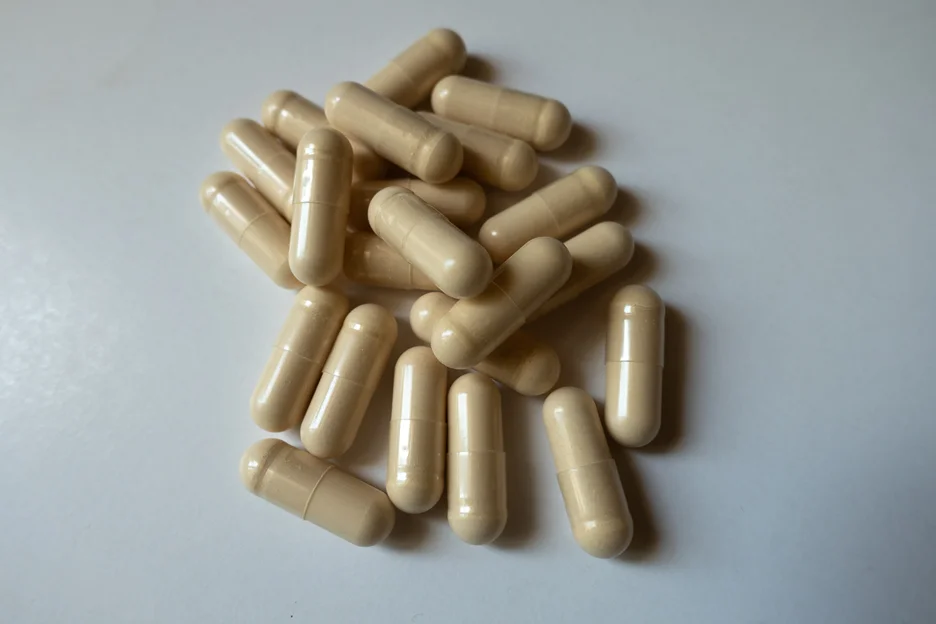Exploring the Crucial Role of DAO Enzyme in Histamine Metabolism and Digestive Health
You know how some days you wake up and just feel off? Maybe your stomach is a little queasy or you’re excessively hungry. Little do you realize that tiny fluctuations in the levels of histamine, a hormone-like substance, may be to blame.
Lucky for you, your body has diamine oxidase or DAO, an enzyme dedicated to regulating histamine levels and keeping them in a healthy balance.
Diamine oxidase (DAO) enzyme
DAO helps metabolize histamines, which are produced throughout the day from the foods we eat and bacterial activity in the gut.
When histamine levels get too high, it leads to issues like inflammation, allergies, and acid reflux. Too little histamine means low energy, digestive problems, and a weakened immune system.
Maintaining the proper balance of this important molecule is crucial for wellness, detoxification, and regulating acid secretion in the stomach. Keeping histamine in check is one of the key ways DAO contributes to an optimized body and mind. Minor fluctuations in DAO activity or availability can have a big impact on how you feel.
Histamine and Its Physiological Roles
Histamine plays so many vital roles in the body, from immune responses to digestion and more. In the immune system, histamine helps trigger an inflammatory response when there is an infection. It stimulates the movement of immune cells to the site of injury or illness and promotes inflammation to help fight off pathogens.
Role of Histamine in Various Physiological Processes
Histamine is also essential for gastric acid secretion and digestion. In the stomach, histamine stimulates the production of hydrochloric acid and enzymes that break down the food we eat. Without enough histamine, digestive problems can develop as the stomach has trouble properly breaking down meals.
Importance of Histamine Receptors and Their Function in Mediating the Effects of Histamine
To mediate the effects of histamine throughout the body, there are four main types of histamine receptors: H1, H2, H3, and H4. These receptors act as docking stations for histamine molecules, initiating a cascade of signals when bound. For example, stimulating the H2 receptor leads to increased blood flow, lowered blood pressure, and increased stomach acid.
Overactivity or underactivity of certain histamine receptors has been linked to conditions like allergies, acid reflux, insomnia, obesity, and more. Finding the right balance of histamine and healthy receptor function is key to wellness and symptom prevention.
Histamine is truly a hormone with diverse and essential roles. From supporting the immune response and inflammation to aiding digestion and metabolism, histamine and its receptors are finely tuned to enable optimal health and functioning. Even minor imbalances can have noticeable negative impacts on how you feel.
The Role of DAO in Histamine Degradation

As we discussed in the introduction, DAO plays a crucial role in regulating histamine levels in the body by breaking down excess histamine. This enzyme helps prevent histamine from accumulating to toxic levels, which could lead to symptoms like inflammation, rashes, digestive issues, and more.
Function of DAO in Breaking Down Excess Histamine in the Body
DAO enzymatic activity is essential for maintaining a healthy balance of histamine in the body. Without enough active DAO enzymes, excess histamine would circulate unchecked, potentially causing harm. Deficiencies in DAO have been linked to conditions like schizophrenia, allergies, and food intolerances.
While DAO handles most histamine degradation, it does not work alone. Two other enzymes also help metabolize histamine:
Histamine N-Methyltransferase, or HNMT, converts histamine into methylhistamine which is less biologically active. This helps control histamine signaling and provides another mechanism for regulation.
Monoamine Oxidase, or MAO, breaks down histamine through oxidation. MAO aids in degrading histamine that has been released from cells into the bloodstream or extracellular fluid. Working with DAO and HNMT, MAO helps prevent excessively high levels of this hormone.
Importance of Enzymatic Activity in Maintaining Optimal Histamine Levels
Proper functioning of DAO, HNMT, and MAO is crucial to maintaining optimal histamine amounts and healthy regulation of processes influenced by this molecule like immune response, digestion, inflammation, and more. Imbalances in any of these enzymatic breakdown pathways can contribute to regulatory issues and disease.
DAO and its partner enzymes play a key role in degradation of excess histamine, helping to keep levels in balance and prevent disruption of critical physiological systems.
Connection Between DAO and Gastric Acid Secretion
You’ve likely experienced the discomfort of too little or too much stomach acid at some point. Stomach acid, or hydrochloric acid, is essential for digesting food and absorbing nutrients. However, too much acid can lead to symptoms like abdominal pain, nausea, and acid reflux.
How Dao Activity May Indirectly Influence Gastric Acid Secretion by Regulating Histamine Levels
DAO and the breakdown of histamine play an important indirect role in regulating gastric acid secretion and avoiding these issues.
When histamine levels get too high, it stimulates the production of stomach acid through histamine receptors on acid-secreting cells in the stomach. By metabolizing excess histamine, DAO helps prevent overstimulation of acid secretion and related symptoms.
Potential Implications of Impaired Histamine Degradation on Gastric Acid Secretion and Related Symptoms
Impaired clearance of histamine due to low DAO activity or other causes could lead to excessive stomach acid and discomfort. The stomach would continue producing more acid in response to high histamine, causing irritation, pain, and other digestive problems. On the other hand, not enough histamine or active DAO could result in inadequate acid secretion and difficulties digesting foods.
DAO’s influence on histamine levels creates a kind of feedback loop with acid secretion, helping to maintain balance. Disruption of this loop through enzyme deficiency or other regulatory mechanisms could contribute to conditions like acid reflux, ulcers, stomach inflammation, and poor digestion.
While DAO does not directly stimulate or inhibit stomach acid production, its role in regulating histamine does create an indirect connection. Proper breakdown of histamine through healthy DAO activity is important for controlling gastric acid secretion, supporting digestive health, and avoiding both excess and deficiency.
Factors Influencing DAO Activity and Histamine Levels
There are several factors that can influence DAO activity and histamine levels in the body:
Genetics: The gene inherited from your parents determines the maximum potential for DAO production. Certain genetic variants or mutations have been linked to differences in DAO activity. For example, a polymorphism that modifies the DAO gene has been associated with increased histamine levels and inflammation. Genetic predispositions can make some people more prone to imbalances.
Diet: A diet high in certain anti-nutrients like phytic acid (found in grains) or polyphenols (found in plant compounds) may inhibit DAO activity over time. On the other hand, nutrients like B vitamins, zinc and copper help support DAO production. Probiotics can also aid in digestion, balancing bacterial histamine levels in the gut. An imbalanced, inflammatory diet tends to reduce DAO activity and raise excess histamine.
Health conditions: Chronic inflammation from conditions like Crohn’s disease, ulcerative colitis or food sensitivities strains the body’s ability to break down histamine efficiently.
Gastroesophageal reflux disease (GERD) can also contribute to higher histamine reabsorption and lower DAO. Severe anxiety or depression may sometimes manifest as lower DAO and higher histamine levels.
There are genetic factors, dietary influences and health conditions that can impact DAO activity and alter histamine metabolism either positively or negatively. Optimizing all of these areas helps achieve a balanced state and prevents excessively low or high histamine amounts that lead to issues.
Dietary Management of Histamine-Related Issues
Low-histamine diets can be helpful for regulating histamine levels and managing related issues like acid reflux, inflammation, bloating or digestive distress. By limiting histamine-rich foods, especially in the diet, a low-histamine approach helps prevent excessively high histamine amounts that can lead to symptoms.
| High-Histamine Foods to Avoid | Low-Histamine Alternatives |
| Citrus fruits: Oranges, grapefruit, lemons and limes are high in histamines. Instead, try berries, apples or melons. | Leafy greens, broccoli, asparagus, carrots, beets, squash, sweet potatoes, cauliflower, cabbage, berries, pears, avocados, olives, coconut milk, chia seeds, sprouted nuts and seeds. |
| Fermented foods: Yogurt, kefir, sauerkraut, kimchi, pickles and tempeh produce histamines during fermentation. Opt for fresh produce, nuts, seeds and non-fermented dairy instead. | Leafy greens, broccoli, asparagus, carrots, beets, squash, sweet potatoes, cauliflower, cabbage, berries, pears, avocados, olives, coconut milk, chia seeds, sprouted nuts and seeds. |
| Aged cheeses: As cheeses age, histamine levels rise. Choose fresh goat cheese, feta or high-moisture mozzarella. | Fresh goat cheese, feta, high-moisture mozzarella. |
| Alcohol: Beer, wine, and spirits contain histamines and histamine-releasing compounds. Practice abstinence or social drinking instead. | Non-alcoholic beverages such as water, herbal tea, or fresh juices. |
| Protein sources: Tuna, mackerel, sardines, anchovies, herring, pork, bacon, salami and prosciutto tend to be high in histamines. Chicken, fish, eggs, beans and Greek yogurt provide protein with less histamine. | Chicken, fish, eggs, beans, Greek yogurt, non-dairy milk, nuts, and seeds. |
| Wheats and rye: Whole wheat foods can be high in histamines. Switch to oats, quinoa, rice, potatoes, polenta or gluten-free grains. | Oats, quinoa, rice, potatoes, polenta, gluten-free grains. |
In summary, a low-histamine diet aimed at reducing excessively high histamine intake can be helpful for maintaining balanced levels and optimal gastric acid secretion. By limiting high-histamine foods while eating more whole, fresh and stress-supporting options, you give your body the resources it needs to function properly without disruption.
Diagnosis and Measurement of DAO Activity
There are a few methods used to determine DAO activity levels and diagnose potential issues:
Blood tests
Blood samples can be analyzed for DAO enzymes and histamine metabolites. Lower DAO enzyme activity or higher histamine breakdown products may indicate impairment. However, blood DAO levels do not always correlate well with actual gastrointestinal DAO activity.
Urine histamine metabolite testing
The breakdown products of histamine metabolism, like tele-methylhistamine, can be measured in urine samples. Elevated levels may show impaired clearance of excess histamine due to low DAO. But again, these measures may not reflect activity in the gut where most histamine regulation occurs.
DAO genotype analysis
Identifying genetic variants of the DAO gene can provide some insight into maximum potential enzyme activity. Certain polymorphisms have been linked to higher or lower activity/expression. But diet, environment and health status also strongly influence actual enzyme levels and activity.
Digestive stool analysis
Measuring DAO activity and metabolites in the stool provides a more direct view of breakdown in the GI tract where most DAO expression takes place. However, stool tests require collection and analysis of multiple samples to determine trends over time. They also provide a snapshot rather than continuous monitoring.
ROC (rapid oral challenge) testing
This specialized test measures DAO activity through histamine loading and the body’s response. After ingesting histamine, blood is drawn at intervals to check for proper clearance. While useful for research or complex cases, ROC testing is too invasive and time-consuming for regular clinical diagnosis.
There are several methods for analyzing DAO activity and diagnosing potential impairment, but each also has its limitations. Blood, urine and stool tests provide indirect or limited views of enzyme activity.
Genotyping gives some insight into potential but not actual activity. And specialized ROC testing is too intensive for routine diagnosis. Continued development of diagnostic techniques could help address these challenges and improve management of histamine-related issues.
Conclusion
Diamine oxidase or DAO enzyme activity plays an important indirect role in regulating gastric acid secretion and overall histamine levels in the body. By breaking down excess histamine, DAO helps maintain balance and prevent both inflammation or digestive issues from excess histamine as well as lack of stomach acid and poor digestion from too little histamine.
Schedule a Free Consultation with SeeBeyond Medicine
Understanding this connection is key to recognizing and addressing any problems related to histamine dysregulation. Proper diagnosis of DAO activity or impairment is needed through methods like blood tests, stool analysis, genetic testing or other techniques. Once imbalances are detected, targeted management such as dietary modifications, supplements or other therapies may help normalize levels.
